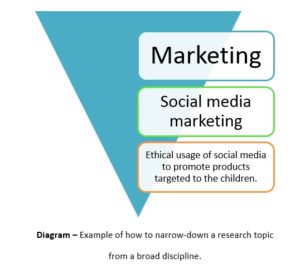
The decision to undertake a Higher Degree Research (HDR) is perhaps one of the most crucial decisions in your life and one that will transform yourself entirely from who you used to be. The enticement of having an extended name isn’t the only perk but there are many other far reaching advantages that you will celebrate for the rest of your life. If you want to choose research as your career, then undertaking a research degree will be instrumental to give you a competitive advantage and significantly improve your skill as a researcher.
But before you decide to undertake a HDR, it involves a range of factors which need careful analysis which will help you to set your foot into the right place. Australia is one of the best locations in the world now-a-days for pursuing a Research Degree. A number of the Australian universities have got into the list of leading research-based universities of the world. The quality of research and supervision in Australia is very high and attracts high quality researchers from all over the world. Australia also offers several types of funding support to attract high quality researchers. Not surprisingly, the HDR application process in Australia is strict and therefore, you need to pay careful attention to detail. Here are some steps that you can follow to prepare your HDR application to study in any Australian universities –
Step 1 – Choose your field
The very first step to prepare for HDR is to narrow-down your area of interest. Keep in mind that PhD/Masters by Research are based on a topic within the broad discipline. If you come from a Marketing discipline, and if you are intending to undertake HDR, you need to narrow-down a specific ‘niche’ or a sub-topic or a sub-category within the broader field of Marketing. It may sound overwhelming at the beginning but you need to carefully select what topic or niche you want to concentrate on. Your professional experience or prior research experience (if any) can influence this decision. Use the following diagram as an example to start thinking how to select your concentration or niche area of research.

Step 2 – Locate the institution/university
Once you have identified your niche or area of research interest, then the next step is to find the institution offering research degree in your chosen field. You may get overwhelmed at the beginning with choices as almost all the universities these days are trying to offer degree in every field. Having said that, there are institutions who specialises in specific field. Some institutions are popular for their Business school, some institutions are popular for Health Science, some for Geography etc. There are several websites, e.g. (Top universities, Good universities guide), which show Australian university ranking. Before you can decide which institution to choose, it is worthwhile to do some research on the ranking of these universities. It is also important to locate the university based on your preferred city or state where you want to go. Although, in the beginning you may not have too much to chose but most international students want to land into bigger cities like Sydney, Melbourne or Brisbane where there are more opportunities to find part-time work. You may find more information on these sites – Study in Australia, Studies in Australia.
Step – 3 Find a supervisor
This is the hardest step and one where you have to be very careful. A PhD student – supervisor relationship is nothing less than a marriage relationship. Like a bad marriage relationship can ruin one’s whole life, similarly, a bad supervisor-candidate relationship can have severe impact into your candidature and possibly for the remainder of your research career. But do not get disheartened with this. I am telling this so that you take extra caution to find a supervisor who will align with your area of interest. Read this article which contains an interesting reflection about 10 types of PhD supervisor-candidate relationship.
For most people the search criteria is usually biased by choices like male or female, culture, rank of the supervisor etc. But the most important criteria should be the right fit in terms of your area of research. Look into the potential supervisor’s list of publications, projects, students already supervised etc. Some of the universities in Australia no longer allow candidates to choose supervisor or supervisors to select candidates – instead they leave the decision to the Higher Degree Research Office who will match the candidate with the appropriate supervisor. If that is the case, then you do not have many options. But if you can select, then start the conversation by sending an email to the supervisor. The email should include your previous research experience, area of interest and research proposal. Read our upcoming blog on how to write a research proposal and writing email to a potential supervisor.
Step 4 – Sources of funding
Australian universities offers competitive funding support in the form of scholarships and stipends to incentivise suitable applicants. The funding support is available for both domestic and international students. Some of the common types of funding program are mentioned below –
Australian Postgraduate Awards (APA)
The APA program provides an annual stipend and other support to selected high-achieving research students. APAs are provided to assist with students’ living costs and general expenses while undertaking a higher degree by research. Awards are available for a period of two years for Masters by research degree and three years for Doctoral degree. The amount of APA scholarship which is well enough to live a moderate life in Australia.
International Postgraduate Research Scholarships (IPRS)
The IPRS is designed to assist international students to undertake a HDR program. The program provides funding for a period of two years for a Masters by research degree or three years for a Doctoral degree. It covers tuition fees and health cover costs for recipients, as well as the health cover costs for any dependants. Roughly there are a total of 330 places awarded each year for IPRS. Applications for IPRS are made directly to the universities.
Apart from the two above scholarships, there are a number of different scholarships provided by Australian universities. Click this link to learn more about the various types of scholarships that are available to study in Australia.
Step 5 – Preparing the application
Australia is a tough country when it comes to compliance and documentation. Therefore, the application process in Australia is a rigorous and requires ticking a lot of boxes correctly. Every university has their own standard set of list/criteria which is outlined clearly into their website. You need to check the list of required document thoroughly and prepare your application accordingly. Typically, the following documents are essential to submit application into any university. Depending on the university, there might be additional documents required to complete your application. Besides, the document list can also vary depending on your country of origin. Here is a checklist of the some of the required documents –
- Certified copies of all certificates
- Certified copies of all transcripts
- Certified copies of all identification documents
- Research proposal
- Complete CV
- Evidence of prior research
- Reference letter from previous supervisor/teacher
Step 6 – Submitting the application
Once you have ticked all of the boxes and included the required documents into a file then the last step is to submit the application. Depending on the university and their application process, the submission process may vary. The submission process could involve –
- Hard-copy submission – submitting the certified copies of all the documents via post.
- Soft copy submission – submitting the scanned certified copies of all documents via the university’s HDR application management system.
You need to ensure that all of your documents are certified by an appropriate certifying authority. Usually that’s a notary public in most countries. Once you get all of your documents certified, then scan them if you have to submit your application online. If sending hard copies then send the certified and attested copies of the original document. Make sure you do not submit the original copies.
If you follow the above steps correctly, then the chances to getting your application accepted for a HDR is much higher. Keep in touch with HotCubator to receive more updates on admission, scholarship and other information to study in Australia.








